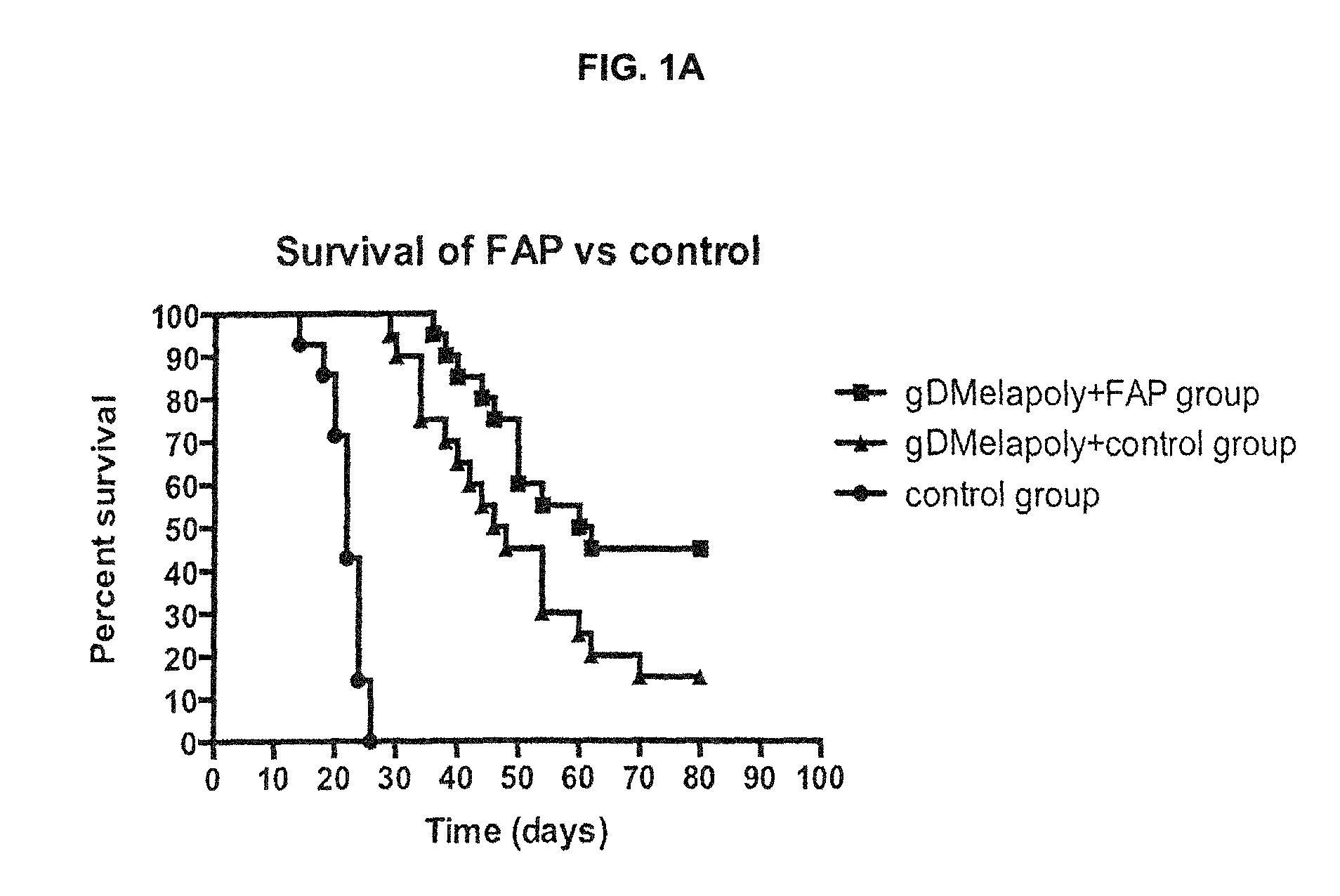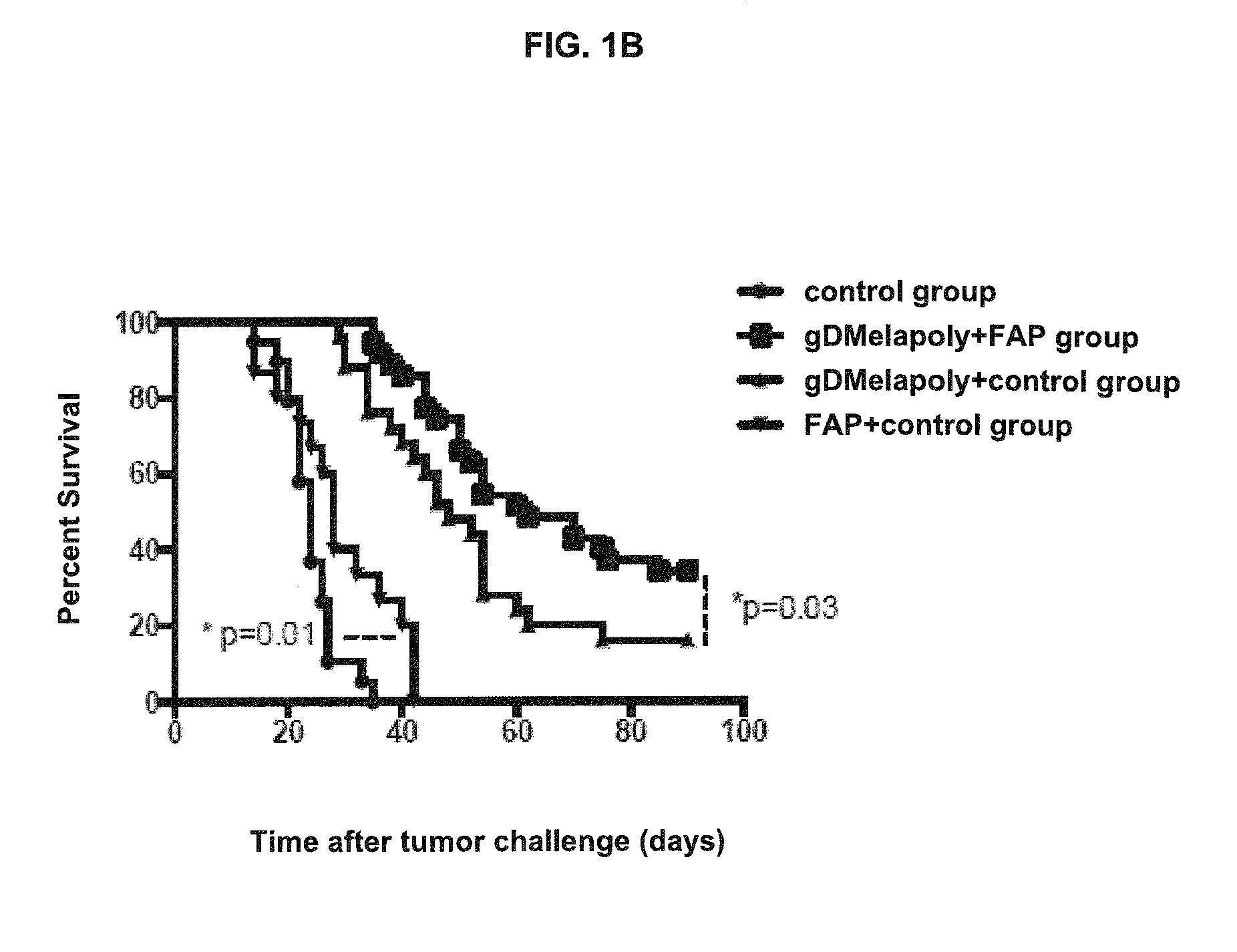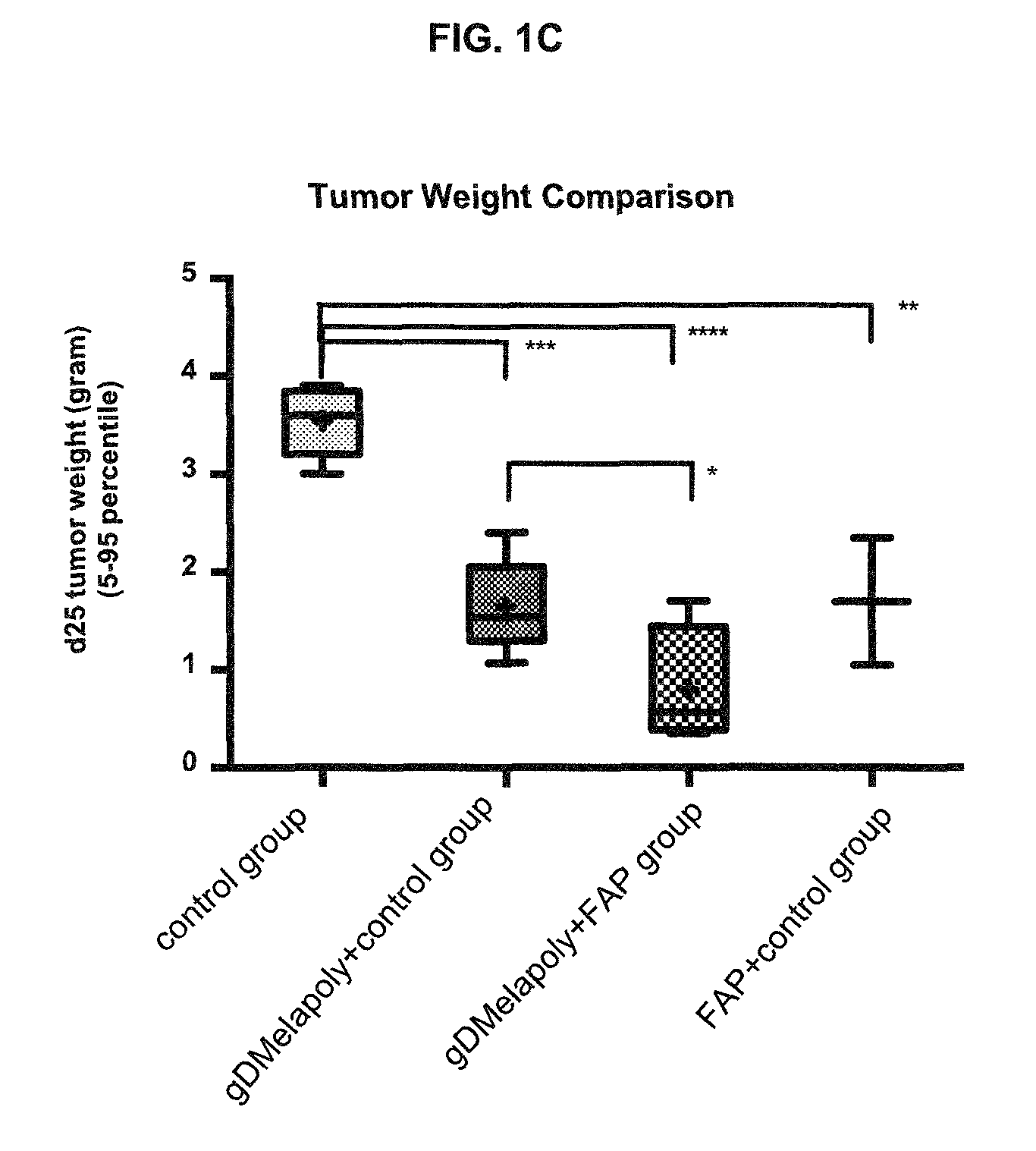Methods and compositions for treating cancer
a cancer and composition technology, applied in the field of cancer compositions, can solve the problems of affecting the efficacy of vaccine/immunogenic compositions, affecting the immunosuppressive microenvironment of tumor cells, and being extremely difficult to treat, so as to improve the efficacy of immunogenic compositions.
- Summary
- Abstract
- Description
- Claims
- Application Information
AI Technical Summary
Benefits of technology
Problems solved by technology
Method used
Image
Examples
example 1
The Design of Adenoviral Vaccine / Immunogenic Composition Expressing Multiple Melanoma Antigen-Derived Epitopes Fused to Herpes Simplex Virus Glycoprotein D (gD)
[0110]An adenoviral vaccine / immunogenic composition expressing multiple immunogenic melanoma antigens fused to gD can induce high frequencies of CD8+ T cells targeting melanoma cells for destruction. One embodiment of a suitable adenoviral vaccine / immunogenic composition that expresses multiple melanoma antigen-derived immunogenic epitopes fused within gD (see FIG. 7) is designed based on the chimpanzee-derived adenoviral vector AdC68 (see, e.g., U.S. Pat. No. 6,083,716). The vaccine / immunogenic composition expresses melanoma antigen derived immunogenic epitopes from mutated Braf, Trp-1, Trp-2, and gp100. Multiple epitopes are expressed to restrain melanoma immune escape. The multi-epitope “Melapoly” construct is fused to HSV gD to at least partially overcome melanoma immune inhibition.
[0111]The Melapoly expression cassette c...
example 2
The Vaccine / Immunogenic Composition's Immunogenicity to Induce Tumor Antigen-Specific Cd8+ T Cells
[0129]Co-expression of several different immunogenic antigens in one vaccine / immunogenic composition can minimize the frequent immune escape of tumor cells. In addition, vaccine / immunogenic compositions expressing antigens as fusion proteins within gD can induce markedly enhanced antigen-specific T cell responses through disruption of the immunosuppressive BTLA-HVEM signaling pathway.
[0130]To determine the immunogenicity and therapeutic effect of this vaccine / immunogenic composition, groups of naive C57BL / 6 mice were immunized intramuscularly with doses ranging from 109 to 1011 viral particles (vps) of either AdC68gD-Melapoly or AdC68Melapoly as described above. Once the immunogenicity of these two vaccine / immunogenic compositions was confirmed in naive mice, tumor-bearing mice are similarly immunized.
[0131]Tumor-bearing mice were generated by injecting a mouse melanoma tumor cell line ...
example 3
The Vaccine / Immunogenic Composition's Therapeutic Effect
[0144]To determine the capacity of this tumor-targeting vaccine / immunogenic composition to kill established tumors and therapeutic effect of this vaccine / immunogenic composition, the tumor status and survival time of vaccinated melanoma-bearing mice was measured and compared to those of control mice. Groups of tumor-bearing mice were immunized with optimized doses of either gD or non-gD vaccine / immunogenic composition; one group of tumor-bearing mice was left untreated. The tumor size in all mice was recorded every other day by measuring 2 perpendicular diameters. Mice were sacrificed upon signs of heavy tumor burden (i.e., >10% body weight) and ulceration of the skin51. The survival time before euthanasia was compared between different groups. Necropsy was performed in all mice upon euthanasia. The tumor status was determined by observation, measuring the tumor volume and weight. Also tumor sections were prepared for H&E stain...
PUM
| Property | Measurement | Unit |
|---|---|---|
| diameter | aaaaa | aaaaa |
| weight | aaaaa | aaaaa |
| time | aaaaa | aaaaa |
Abstract
Description
Claims
Application Information
 Login to View More
Login to View More - R&D
- Intellectual Property
- Life Sciences
- Materials
- Tech Scout
- Unparalleled Data Quality
- Higher Quality Content
- 60% Fewer Hallucinations
Browse by: Latest US Patents, China's latest patents, Technical Efficacy Thesaurus, Application Domain, Technology Topic, Popular Technical Reports.
© 2025 PatSnap. All rights reserved.Legal|Privacy policy|Modern Slavery Act Transparency Statement|Sitemap|About US| Contact US: help@patsnap.com



